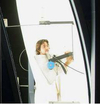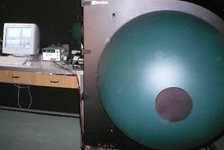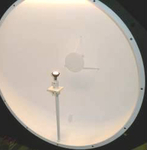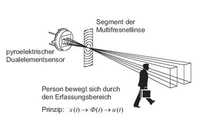New laboratories dedicated to innovative lighting works
Lighting needs at home, in public places and in industry are different. There is an appropriate type of light for each activity. The quantity and quality of light can even have an impact on our comfort and health. This is why manufacturers, specifiers and users need to know the photometric characteristics of light bulbs and fittings. But that is not enough. The performance of the system as a whole is passed under a fine-toothed comb: power supply, light fitting, management and gradation system. The objective is thus to optimise applications. CSTB is studying setting up a certification on these products to make a distinction between them and to reassure users and clients, at a time when energy savings are primordial. Remember that electrical expenditure for lighting represents 20% of world electricity consumption.
Apart from making assessments of innovative products for manufacturers, these laboratories are also designed for research. CSTB’s lighting team works particularly on Characterisation of Integration and Durability of LED Lighting Devices in buildings (the CITADEL project) to get a better evaluation of these new light sources. Furthermore, a study is currently being made for AFSSET on the biological safety of LEDs, to verify that they are not harmful to the eye.
Photometric measurements in integrating spheres to quantify and qualify artificial light
Three integrating spheres with 3 different diameters (30 cm, 1 m and 3 m) are used to make measurements on very small LED type sources, and larger sources up to large light fittings such as stadium spotlights. Light flux and colour renderings are measured in the spheres.
Dynamic measurement of the light efficiency of lighting systems

The light efficiency of a lighting fixture is a determining factor in the choice of an energy-efficient light. We evaluate complete light systems (lamp, optics, ballast, management system) when switching on, during gradation, colour variation phases, etc., through long term monitoring of electrical powers, the flux output from the light fitting and the light chromatic coordinates.
CSTB’s test bench is composed of a 3-meter integrating sphere, a voltage stabiliser, a parameter setting and measurement system (current, voltage, cos Φ) and a system for acquisition of photometric characteristics of the light fitting. Large light fittings can also be evaluated due to the size of the sphere.
The gonio-photometer in near field to determine the directivity of light sources
This test bench provides information about luminance and intensities emitted by a light fitting in each direction in space, using a camera to make a fine angular scan around the source. Lighting software then uses these data, for example to precisely process ergonomics of workstations, lighting for museums and art galleries or illumination of monuments.
Characterisation of sensors for intelligent lighting systems
Like all other building and district facilities, lighting systems are energy consumers. Sensors are integrated into control systems to optimise switching times or to adapt the light flux depending on the available quantity of natural light, so as to generate savings.
The sensor characterisation bench determines the relative response of the sensor depending on the position of the source in space and its displacement speed. Depending on the source used (black body or collimated diffuse light), the bench will be used specifically either in the infrared for presence and movement sensors, or in the visible range for light sensors.
The technical characteristics of the tested sensor may be input into the digital model of a room to optimise the position of the sensor in the room, to simulate general lighting during the day, with a realistic or false colour photo rendering to demonstrate illumination levels. Finally, the calculation of energy savings achieved by the development of an intelligent lighting system is the final tool to convince project decision makers.
Infrared thermography camera

Thermography has many applications, particularly for buildings and lighting of indoor and outdoor spaces; temperature measurements of light fittings and their electronic systems, the thermal map of the environment of light fittings integrated into the structure, displays of scenes detected by sensors are a few examples of how this infrared camera can be used.
Video-luminance-meter
CSTB lighting experts use the video-luminance-meter to make luminance, contrast and intensity measurements on light sources in laboratory, and in situ diagnostics in the context of public lighting studies, or building accesses, and to direct persons with impaired vision or other pathologies.




